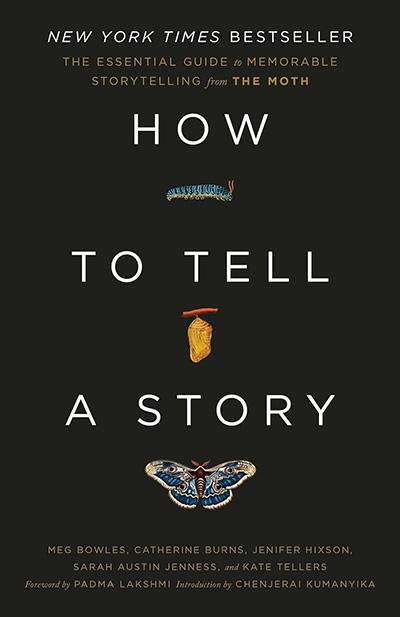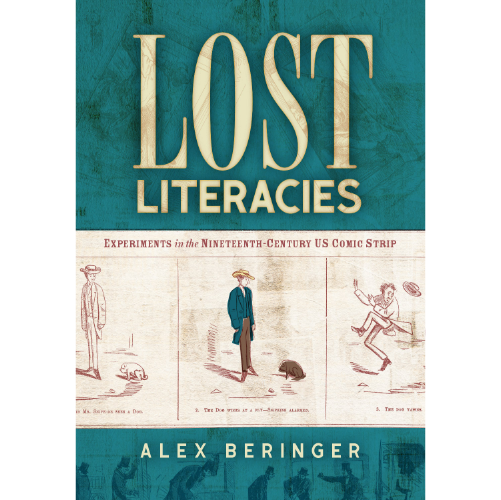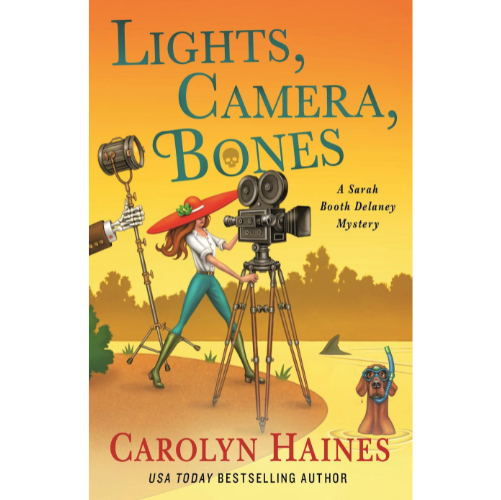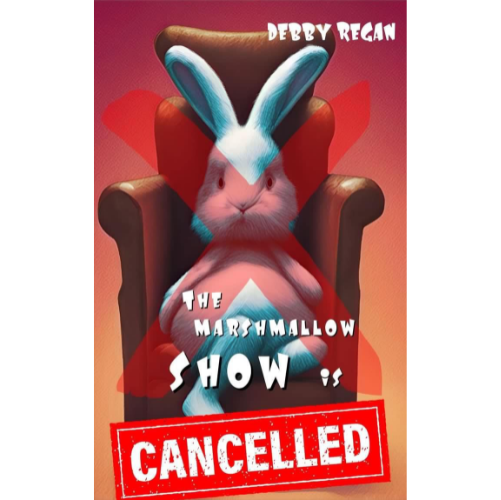How to Tell a Story
By Meg Bowles, Catherine Burns, Jenifer Hixson, Sarah Austin Jenness, and Kate Tellers
Crown Paperback, 2023
Paperback: $18.00
Genre: Storytelling
Reviewed by Edward Journey

We have stories to tell and the authors of How to Tell a Story are determined that we’ll learn how to tell them right. Listeners of the public radio program The Moth Radio Hour are aware of the high quality of storytelling featured on that show. How to Tell a Story is a master class in “Moth-style” storytelling presented by some of the directors, hosts, and producers who make it happen.
Since Moth founder George Dawes Green hosted the first Moth event in 1997, in his living room in New York City, the Moth umbrella has grown into an international movement that includes Moth Mainstage, Moth StorySlams, Moth Community Programs, MothWorks, Moth Podcasts, Moth Radio Hour, and the Moth Education Program. According to the book, more than fifty thousand Moth storytellers have shared their stories through some iteration of the outlet. Some of that success is owed to Catherine Burns, the Moth’s long-time artistic director and a native of Alabama familiar to Alabama public radio station listeners.
This newest book of the Moth movement is geared to more than Moth aspirants, but it is frequently enhanced by examples and excerpts from Moth presentations as well as first-person accounts by various Moth personnel and storytellers. “It felt like art” from the beginning in that New York living room and How to Tell a Story strives to capture and hone the art of personal storytelling, to calm the fears of potential storytellers, and to convince the reader that we all have stories worth sharing.
Indeed, the tone of a therapeutic pep rally pervades much of the book, starting with a forward by Padma Lakshmi and an introduction by Chenjerai Kumanyika, Moth storytellers who found the experience to be transformative. The affirmations continue throughout the book and occasionally come across as bossy and formulaic; when the reader is encouraged to “scrounge around in the beautiful junkyard of your memory” I thought I had had quite enough. Even so, I was compelled to read on, and I promise it gets better.
While the focus of How to Tell a Story is sharing one’s personal stories in a Moth-like setting, the authors emphasize the application of those skills into other situations and the book manages to effectively codify much that is intuitive. Having taught public speaking courses to college students, I can attest to the importance of nailing the beginning and the ending of a presentation and avoiding “assault by information” by choosing data selectively and keeping the knowledge-level and interests of one’s audience in mind. The book stresses the importance of “telling” the story to the audience and prohibits memorizing or reading it to them. There is good information about how to structure a story, making the book a resource for teachers and the classroom.
There are strong chapters that deal with ways in which sharing your story can be therapeutic and eye-opening, both to the teller and to those who listen. A chapter entitled “Magnifying the Emotion” deals with many examples of such stories, including the life-changing stories of victims of Post-Traumatic Stress Disorder (PTSD).
The challenges of being “different” are explored from many angles. A recounting of the time a Moth event was scheduled at the National Cowboy Poetry Gathering in Nevada is particularly enlightening. A Black woman was scheduled to host the cowboy event and an undocumented immigrant storyteller was scheduled to share his story about crossing the border. They reveal their trepidation about speaking before such a gathering and both are pleasantly surprised at the enthusiastic welcome they receive. The reader is reminded that “Discomfort is a catalyst for change.”
How to Tell a Story seems primarily geared to fans of the Moth who want to get involved, and the organization’s various programs are described and plugged throughout. Helpful comments about how to adapt Moth techniques for special occasions – a toast, a eulogy, a work presentation, a job interview, a family gathering, a party, a date – are interspersed throughout the text. Over the years, the Moth has worked to create an international community of tellers and listeners. How to Tell a Story endeavors to help that community grow.
Edward Journey, a retired university professor and theatre professional living in Birmingham, regularly shares his essays in the online journal “Professional Southerner” (www.professionalsoutherner.com).
.





